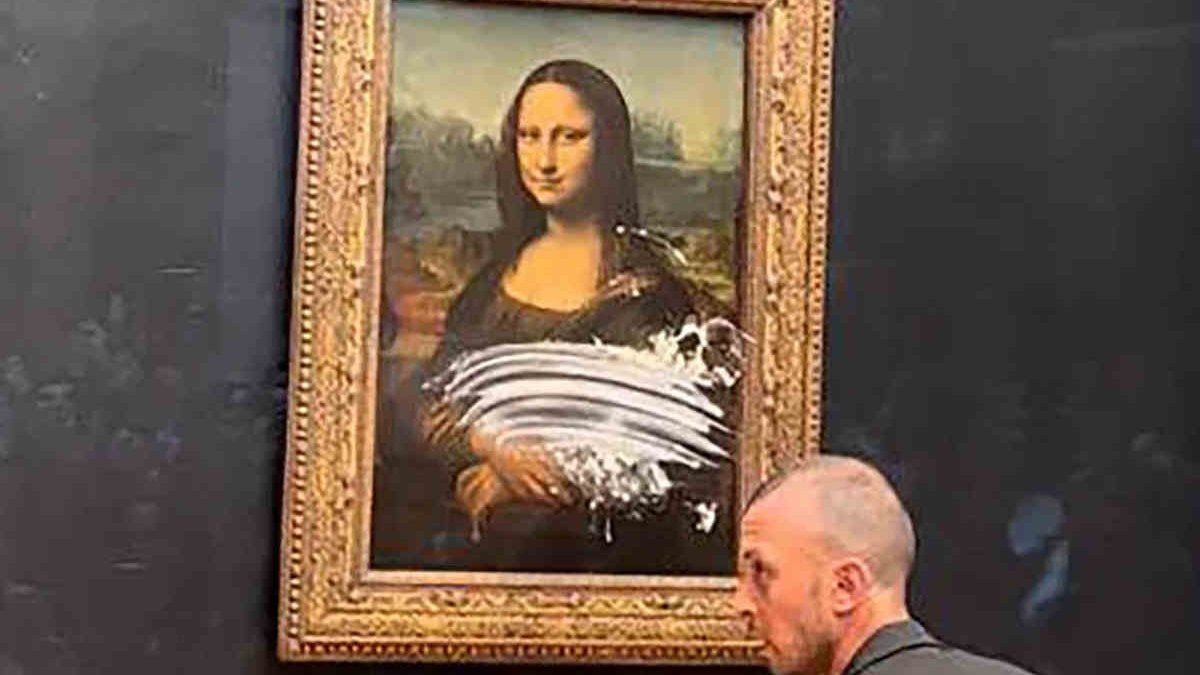The painting, enigmatic even in the identity of the model (there are different hypotheses about its name, including the preposterous one that affirms that it is Da Vinci himself transvestite) was acquired by the Louvre in 1797, and throughout the 19th century it hung on its shelves. walls as one more work, without major relevance. The fame began at the beginning of the 20th century with its theft, from which -as mentioned before- its characteristic as a Renaissance emblem became solid. The specialized magazine ARTinf made a report on the different attacks that the work suffered, six in total with the one this week, which we summarize here for the reader:
In 1911, the Italian thief Vincenzo Peruggia and two other people hid in a locker in the Louvre, stayed until after the museum closed, and then chose that painting to take away quietly as it lacked any kind of protection. As was said before, the Gioconda did not have any singularity, until then, neither for the Louvre authorities nor for art historians. Peruggia removed the cloth from his frame, wrapped it up, and together with his accomplices they took a train to Italy. However, the world press gave such coverage to the event that it was impossible for the thief to sell it. He returned with her to Paris, hid her in a basement of his apartment, and allowed two years to pass for the fact to disappear from the newspapers. It was then that he tried to sell it to an antiquarian in Florence, who alerted the Museo degli Uffizi, who alerted the police, and the painting was returned to the Louvre. Peruggia spent only half a year in prison.
In 1956 the Mona Lisa was vandalized twice. In the foreground, a man, visibly upset, approached her with a knife and intended to slash her, though he was happily caught in time by security and no harm was done. Two months later, a Bolivian man, Hugo Unjaga Villegas, threw a piece of rubble at him. “I was carrying this piece of junk in my pocket and all of a sudden the idea came to me to throw it at it,” he said after he was arrested. Already at that time, after the failed attack of the same year, the work was behind glass (although not yet bulletproof, like the current one). For this reason, the rubble removed a speck of paint in one area, although it was restored by experts and was able to be exposed again shortly after the vandalism.
In 1974, the Mona Lisa left the Louvre to be exhibited in Japan, in one of the very rare and already unusual tours of the work. It was exhibited at the Tokyo National Museum, where more than a million people came to see it. It was then that Tomoko Yonezu, a 25-year-old woman, sprayed her with a red spray on the first day of her exposure. Prior to the arrival of the work, there had been a debate in Japan about discrimination against the disabled, since the high stairs of the Museum lacked ramps for them. Between 20 and 30 drops of spray paint touched the canvas, but in the end the work was saved as the stains could be removed. Yonezu was arrested and tried, but her case became controversial, because a large part of public opinion said that not only the disabled were discriminated against but also her, as a woman. In the end, she was only fined 3,000 yen, and the Museum soon set up a handicapped entrance.
In 2009, a Russian woman smashed a cup of tea she was carrying in her bag against the protective glass of the construction site. The woman, somewhat unhinged, said that she had done it because France was denying her citizenship. The glass prevented the damage, although at that time the Louvre made the decision to move the Mona Lisa to its own gallery and at a safe distance from other works. In 2019, its glass was upgraded with a bulletproof coating.
Finally, last Monday, a 36-year-old man, disguised as a woman and in a wheelchair, smeared his glass with a cream cake as a protest against climate change. “Some are doing this very thing against the planet. Destroying the earth, and all artists must think about it. This is why I do this,” he declared. The man was arrested and the Louvre filed a criminal complaint.
Source: Ambito
David William is a talented author who has made a name for himself in the world of writing. He is a professional author who writes on a wide range of topics, from general interest to opinion news. David is currently working as a writer at 24 hours worlds where he brings his unique perspective and in-depth research to his articles, making them both informative and engaging.




